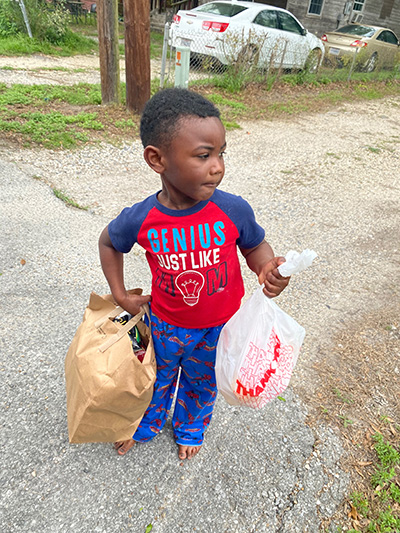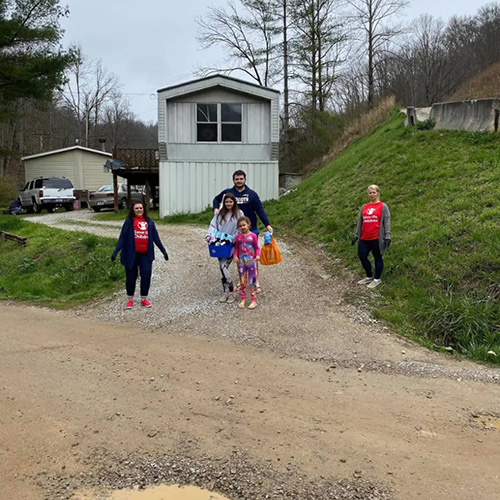It’s a cruel irony of the COVID-19 (Coronavirus) pandemic: the youngest children, whose brains depend on education for healthy brain development, are least teachable via online platforms. Despite all the stellar technology available, the critical dynamic of early childhood education happens face to face and in close proximity.

That’s why, despite government and philanthropic interventions, education for the pre-kindergarten set will take a hard hit in the wake of this crisis. The impact is compounded for children in need, says Betsy Zorio, vice president of U.S. programs and advocacy at Save the Children. “Summer 2020 is shaping up to be the longest summer of their young lives,” she warns.
Save the Children, a national leader in protecting children in emergencies and disasters, operates in more than 200 rural communities in 12 states. Its team of nearly 1,500 early childhood education staffers delivers early childhood education and family engagement programs, as well as training and employing local educators and staff. It has created a signature Coronavirus and Kids resource.
Here are three facets of the organization’s multidimensional COVID-19 response:
1. Nutrition: An alliance with No Kid Hungry is ensuring that school districts, community organizations and government agencies can get nutrition assistance. Simply contact No Kid Hungry at their COVID-19 support inquiry form. Organizations eligible for funding will be contacted directly to submit an application.
Parents and caregivers seeking meals for children in five states and counting, can text the word “FOOD” (or “COMIDA”) to 877-877 to find emergency food distribution sites in their neighborhoods. Note: this service is currently active in Colorado, Hawaii, North Carolina, Tennessee and Virginia. More states will be added on a rolling basis over the next few weeks as meal site data becomes available.
2. #SAVEWITHSTORIES: Besides being gifted actors, Jennifer Garner and Amy Adams have stepped up for kids with their Instagram #SAVEWITHSTORIES campaign. It’s a great way to keep learning going while millions of Americans are home. #SAVEWITHSTORIES benefits Save the Children and No Kid Hungry. Follow along on Instagram at @SaveWithStories or by clicking here. (Learn more and support the campaign.) Five of our favorites:
Amanda Gorman reading “LOVE” by Matt de la Peña, illustrated by Loren Long. Gorman is the Inaugural Youth Poet Laureate of the United States. Read more here.
Lisa Ling reading “Mixed: A Colorful Story” by Arree Chung. (Her daughter totally steals the show!)
Jake Gyllenhaal reading “Where Do Balloons Go?” by Jamie Lee Curtis, illustrated by Laura Cornell (almost as good as his performance as a deranged wildlife TV presenter in Bong Joon-ho’s Okja)
Laura Dern reading “Iggy Peck, Architect” by Andrea Beaty, illustrated by David Roberts
Katherine Schwarzenegger reading her own “Maverick and Me,” illustrated by Phyllis Harris, along with husband Chris Pratt
3. Maintaining Contact: Schools and libraries are closed. There’s a wealth of resources online, but not everybody can get online. Save the Children’s Lindsey Lockman Dougherty says, “We’re adapting our program models to maintain contact and provide support to families during this pandemic. And when necessary, we’re relying on 20th-century solutions to serve children in rural communities,” such as printing and distributing educational materials within schools’ food distribution programs and calling families directly to share information and resources.

Save the Children also raises awareness about Vroom—the Bezos Family Foundation’s platform for boosting the brain-building power of parent-child interactions. Lockman Dougherty, Save the Children’s Vroom specialist, says that while the digital divide always factors into their attempts to help home-bound kids to learn, many families without broadband do have smartphones and appreciate the Vroom app and Vroom by Text. “This is how to turn any moment into a brain-building moment,” she says.
“Coronavirus is going to change all of our lives,” says Zorio. “We are looking at the impacts wide-scale learning loss will have on our nation’s kids, but we also see solutions and the chance to set lasting positive change into motion.”

Mark Swartz
Mark Swartz writes about efforts to improve early care and education as well as developments in the U.S. care economy. He lives in Maryland.



